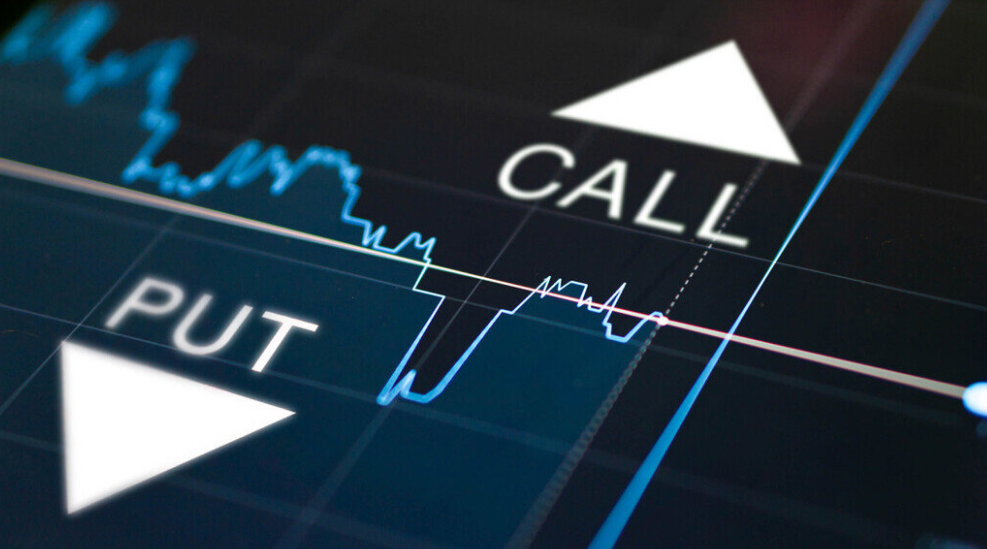Money Management (Pt. I):Controlling Risk and Capturing Profits
Money management is the process of analyzing trades for risk and potential profits, determining how much risk, if any, is acceptable and managing a trade position (if taken) to control risk and maximize profitability. Many traders pay lip service to money management while spending the bulk of their time and energy trying to find the perfect (read: imaginary) trading system or entry method. But traders ignore money management at their own peril.
The story of three not-so-wise men I know of one gentleman who invested about $5,000 on options on a hot stock.
Each time the stock rose and the options neared expiration, he would pyramid his position, plowing his profits back into more options. His stake continued to grow so large that he quit his day job. As he approached the million-dollar mark, I asked him, “Why don’t you diversify to protect some of that capital?” He answered that he was going to keep
pyramiding his money into the same stock options until he reached three to four million dollars, at which point he would retire and buy a sailboat.I recently met a second gentleman at a dinner party. He told me that six months ago he began day trading hot stocks.
It was so profitable, he said, that he quit a flourishing law practice to trade full time. Amazed at his success, I asked him, “How much do you risk per trade, a half point, one point?” He replied, “Oh no, I don’t like to take a loss.”A third gentleman was making his fortune buying the hottest stock(s) on the momentum list(s). He, too, was on the verge of quitting a successful business.When asked about his exit strategy, he replied “I just wait for them to go up.”When asked, “What if they go down?” his reply was, “Oh, they always come back.”What ever happened to these “traders?” Gentleman number one is now homeless, and the other two are about to be. They are on the verge of financial devastation and the emotional devastation that goes along with it. This is the cold, hard reality of ignoring risk. How do we avoid following in the footsteps of these foolhardy traders? Three things will prevent this from happening: 1) money management, 2) money management, and 3) money management.The importance of money management can best be shown through drawdown analysis.
Drawdown
Drawdown is simply the amount of money you lose trading, expressed as a percentage of your total trading equity. If all your trades were profitable, you would never experience a drawdown. Drawdown does not measure overall
performance, only the money lost while achieving that performance. Its calculation begins only with a losing trade and continues as long as the account hits new equity lows.Suppose you begin with an account of $10,000 and lose $2,000. Your drawdown would be 20%. On the $8,000 that remains, if you subsequently make $1,000, then lose $2,000, you now have a drawdown of 30% ($8,000 + $1,000 – $2,000 =$7,000, a 30% loss on the original equity stake of $10,000). But, if you made $4,000 after the initial $2,000 loss (increasing your account equity to $12,000),then lost another $3,000, your drawdown would be 25% ($12,000 – $3,000 =$9,000, a 25% drop from the new equity high of $12,000).
Maximum drawdown is the largest percentage drop in your account betweenequity peaks. In other words, it’s how much money you lose until you get back to breakeven. If you began with $10,000 and lost $4,000 before getting back to breakeven, your maximum drawdown would be 40%. Keep in mind that no matter how much you are up in your account at any given time–100%, 200%, 300%–a 100% drawdown will wipe out your trading account. This leads us to our next topic: the difficulty of recovering from drawdowns.
By Dave Landry
To Read more,Please download the book.
binary options demo account, Forex Education, Forex Education Books
Similar Videos and E-books
LEAVE A COMMENT
All Books
For Beginners
- Candlesticks For Support And Resistance
- Online Trading Courses
- Commodity Futures Trading for Beginners
- Hidden Divergence
- Peaks and Troughs
- Reverse Divergences And Momentum
- Strategy:10
- The NYSE Tick Index And Candlesticks
- Trend Determination
- The Original Turtle Trading Rules
- Introduction to Forex
- The Six Forces of Forex
- Study Book for Successful Foreign Exchange Dealing
- Forex. On-Line Manual for Successful Trading
- 18 Trading Champions Share Their Keys to Top Trading Profits
- The Way to Trade Forex
- The Truth About Fibonacci Trading
- Quick Guide to Forex Trading
- Chart Patterns and Technical Indicators
- Forex Trading
- Trading Forex: What Investors Need to Know
- My Dog Ate My Forex
- Point & Figure for Forex
Forex Market in General
- Screen Information, Trader Activity, and Bid-Ask Spreads in a Limit Order Market
- Strategic experimentation in a dealership market
- Limit Orders, Depth, and Volatility
- Reminiscences of a Stock Operator
- Market Profile Basics
- Quote Setting and Price Formation in an Order Driven Market
- Phantom of the Pits
- An Introduction to Market Profile and a Users Guide to Capital Flow Software
- The Effect of Tick Size on Volatility, Trader Behavior, and Market Quality
- Trading as a Business
- What Moves the Currency Market?
- Macroeconomic Implications of the Beliefs and Behavior of Foreign Exchange Traders
- All About the Foreign Exchange Market in the United States
Psychology of Trading
- A Course in Miracles
- Thoughts on Trading
- Calming The Mind So That Body Can Perform
- Lifestyles of the Rich and Pipped
- The Miracle of Discipline
- Zoom in on Personal Trading Behavior And Profit from It
- The Woodchuck and the Possum
- 25 Rules Of Forex Trading Discipline
- Stop Losses Are For Sissies
- Your Personality and Successful Trading
- Trading as a Business
- The 7 Deadly Sins of Forex (and How to Avoid Them)
- The 5 Steps to Becoming a Trader
Money Management
- Risk Control and Money Management
- Money Management
- Position-sizing Effects on Trader Performance: An experimental analysis
- Fine-Tuning Your Money Management System
- Money Management: Controlling Risk and Capturing Profits
- Money Management Strategies for Serious Traders
- The Truth About Money Management
- Money Management and Risk Management
Forex Strategy
- 1-2-3 System
- Bollinger Bandit Trading Strategy
- Value Area
- The Dynamic Breakout II Strategy
- Ghost Trader Trading Strategy
- King Keltner Trading Strategy
- Scalp Trading Methods
- LSS - An Introduction to the 3-Day Cycle Method
- Market Turns And Continuation Moves With The Tick Index
- The Money Manager Trading Strategy
- Picking Tops And Bottoms With The Tick Index
- The Super Combo Day Trading Strategy
- The Eleven Elliott Wave Patterns
- The Thermostat Trading Strategy
- Intraday trading with the TICK
- Traders Trick Entry
- Fibonacci Trader Journal
- Rapid Forex
- Microtrading the 1 Minute Chart
- BunnyGirl Forex Trading Strategy Rules and FAQ
- The Daily Fozzy Method
- Forex Traders Cheat Sheet
- Offset Trading
- How to Trade Both Trend and Range Markets by Single Strategy?
- A Practical Guide to Technical Indicators; Moving Averages
- FX Wizard
- FX Destroyer
- A Practical Guide to Swing Trading
- Practical Fibonacci Methods for Forex Trading
- Using The Heikin-Ashi Technique
- The Day Trade Forex System
- 5/13/62
- Not So Squeezy Trading Manual
- KobasFX Strategy
- Killer Patterns
- 3D Trading
- 4 Hour MACD Forex Strategy
- WRB Analysis Tutorial
Advanced Forex Trading
- A New Interpretation of Information Rate
- CCI Manual
- Nicktrader and Jeff Explaining Reverse and Regular Divers
- NickTrader on No Price CCI Divergence Trading
- Are Supply and Demand Driving Stock Prices?
- The Sharpe Ratio
- The Interaction Between the Frequency of Market Quotes, Spread and Volatility in Forex
- Trend Determination
- Trend vs. No Trend
- A Six-Part Study Guide to Market Profile
- How George Soros Knows What He Knows
- Core Point and Figure Chart Patterns
- Coders Guru Full Course
- Point and Figure Charting: a Computational Methodology and Trading Rule Performance in the S&P 500 Futures Market
- Evolving Chart Pattern Sensitive Neural Network Based Forex Trading Agents
- Heisenberg Uncertainty Principle and Economic Analogues of Basic Physical Quantities
- The String Prediction Models as an Invariants of Time Series in Forex Market
- Using Recurrent Neural Networks to Forecasting of Forex
- The New Elliott Wave Rule - Achieve Definitive Wave Counts










